Notes from the Field: A Growers Perspective – Ben Kraus Chat #6
Welcome back to our sixth report of 2025 Notes from the Field! As a reminder, this year’s Notes from the Field will follow Ben Kraus with Gwenyn Hill Farm (Waukesha). The goal of this newsletter is to hear from the grower’s perspective and foster connection between fruit growers. We’ll be focusing our discussions on phenology/fruit development and integrated pest management. This week, Ben is working on tackling continued disease pressure, getting apple maggot monitoring traps hung, and picking some early cherry and berry varieties.
I met with Ben on Thursday, June 26th for a walk through the orchard. As a reminder, Gwenyn Hill has a 4-acre block of tree fruit and berries that sits along a north-facing slope, and ~150 table grape vines bordered by saskatoons and rhubarb across the road. Weather over the past ~two weeks (June 16 – June 30) has been hot and humid, with increased precipitation events. According to NEWA, Gwenyn Hill had an average high temperature of 82.8℉, average low temperature of 66.0℉, and a total of 3.65” of precipitation (NEWA – Colgate, WI). Ben just wrapped up harvesting sweet cherries for the year, and I even got to pick a straggler – a delicious Governor Wood cultivar which is similar in look and taste to Rainier cherries. The other tree fruit, pears, plums, peaches and apples, are gaining some size with the warmer temperatures and precipitation. Apples are ~30mm+, while grapes are into EL stage 21-25. As for berries, elderberries are into petal fall and Ben picked the first red currants of the year!
Note: Gwenyn Hill is impacted by the “lake effect” from Lake Michigan and is slightly behind in terms of phenology, compared to other southern WI locations.
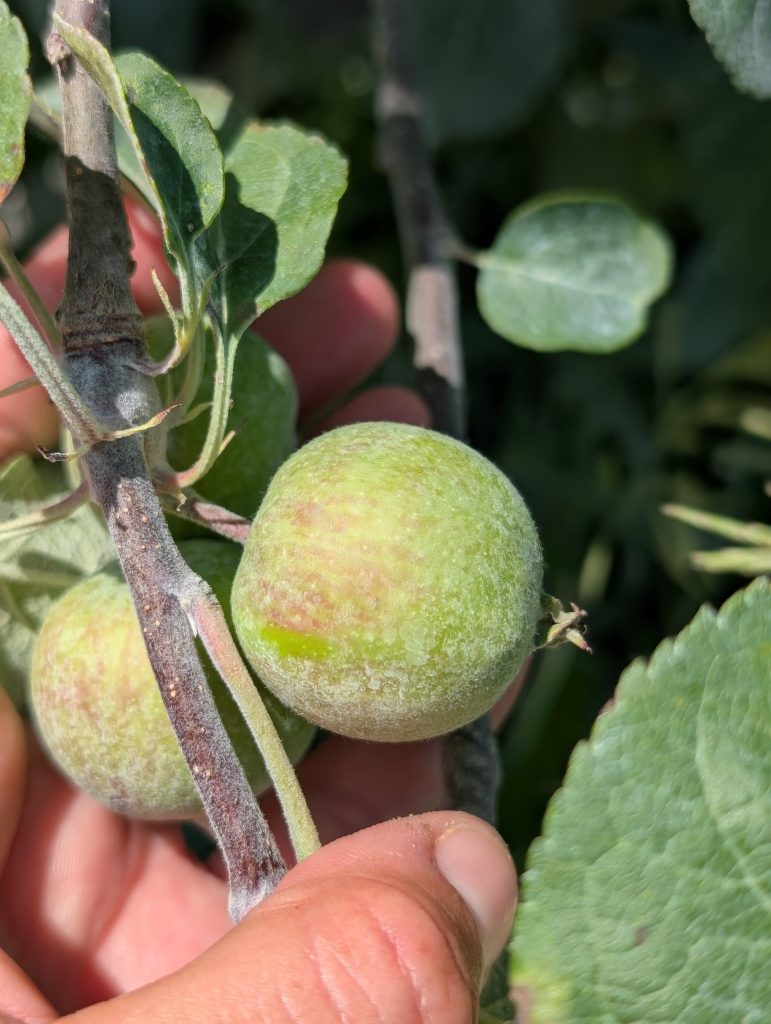
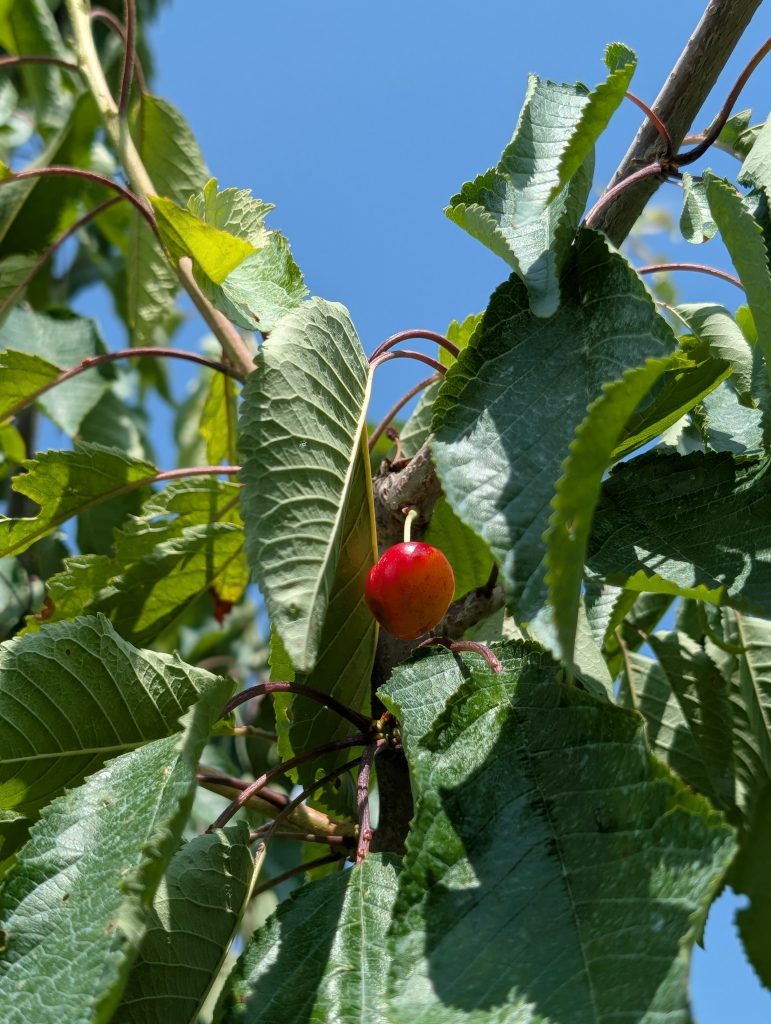
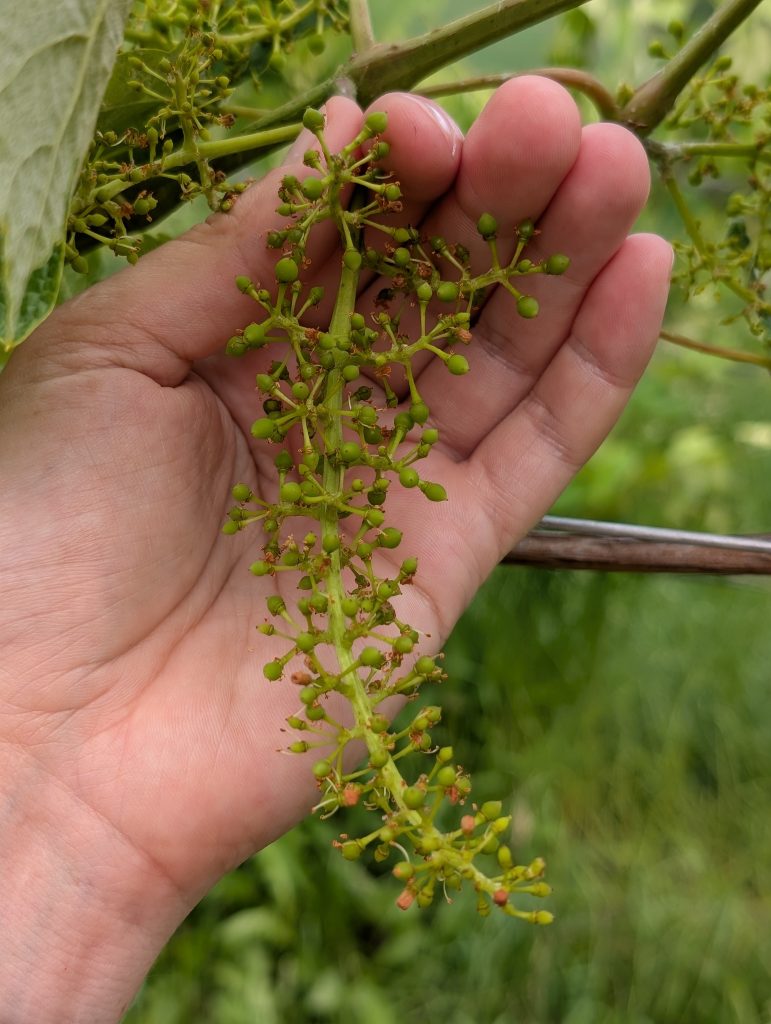
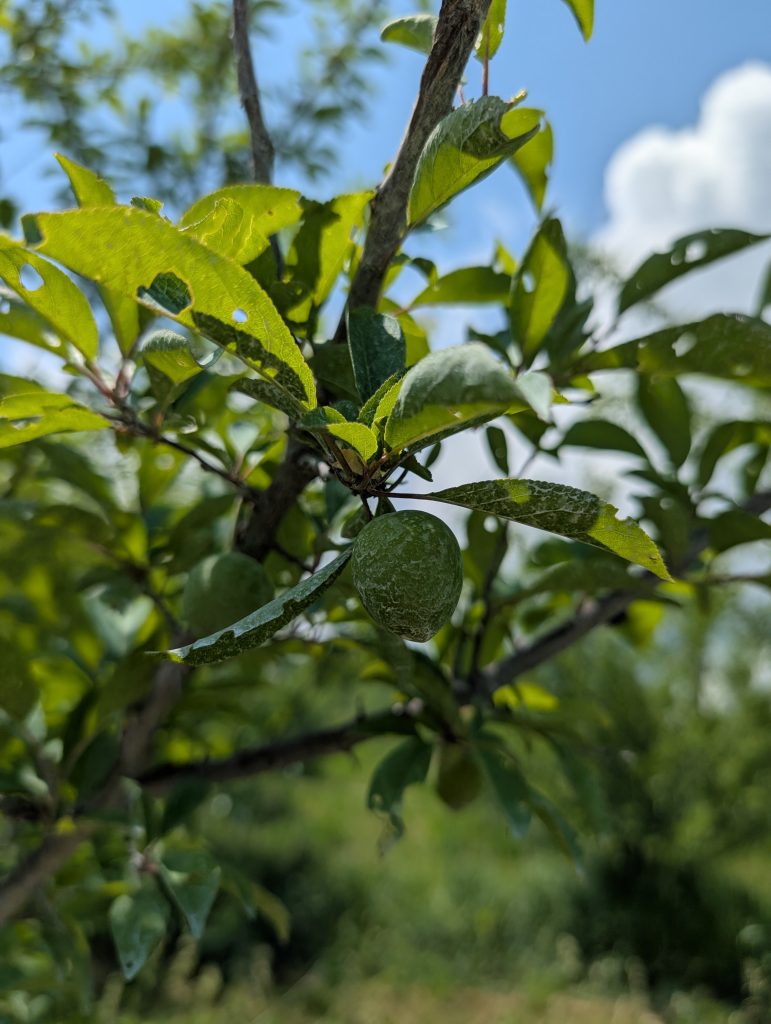
Ben has been diligently working to prune out infected branches/fruit, and keep fruit covered with disease protectants after numerous, heavy precipitation events. A reminder that most protectants will wash off after ~1inch of rain. Apple scab and fire blight have been popping up in the apples and pears. The peach leaf curl-infected leaves have been dropping from peach trees, and new, healthy leaves are beginning to emerge. Plum shothole disease is also in full swing. Ben plans to incorporate Serenade (Bacillus subtilis strain QST 713) into his disease program to help keep fruit protected, and will continue using Potassium Bicarbonate as-needed.
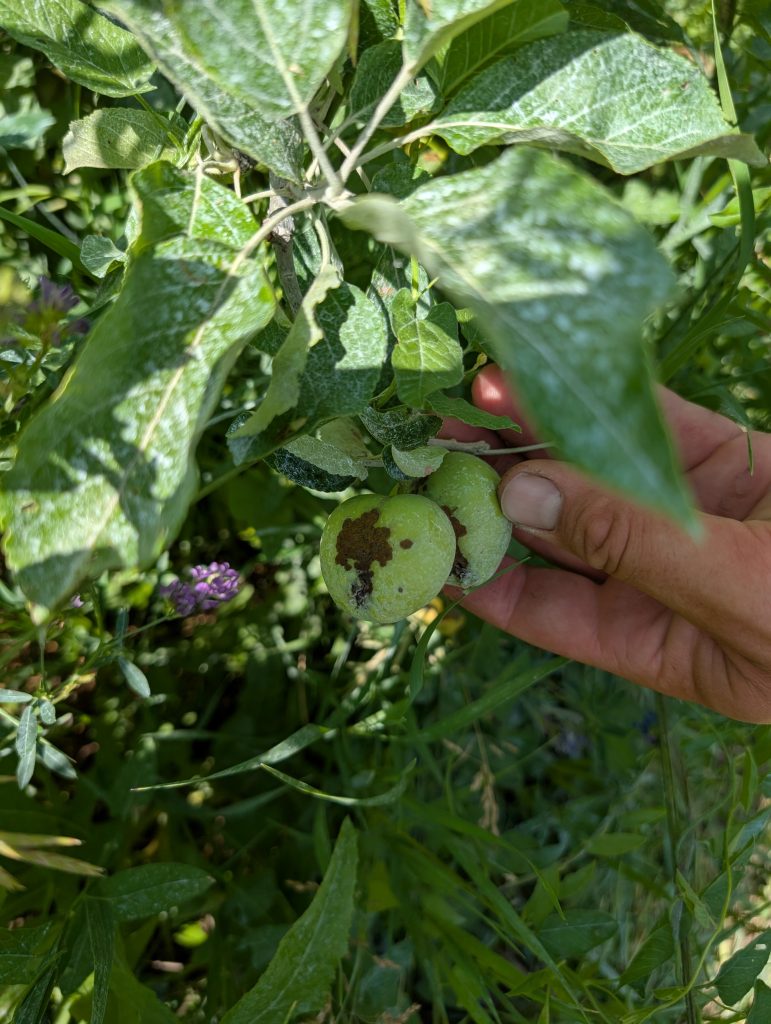
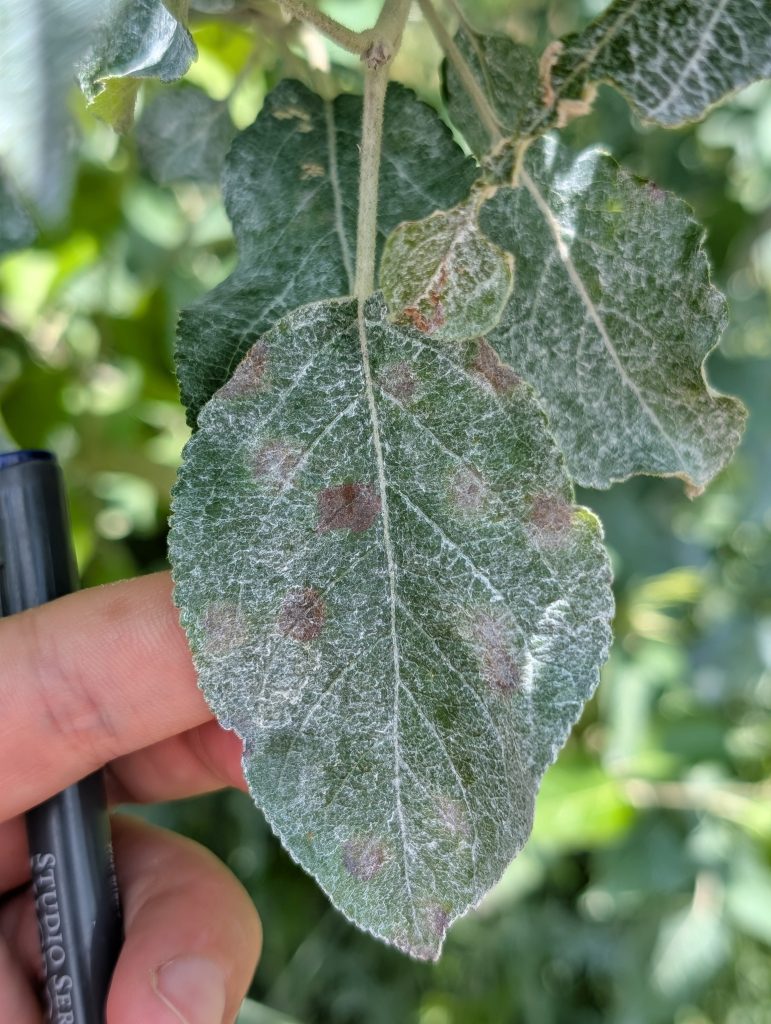
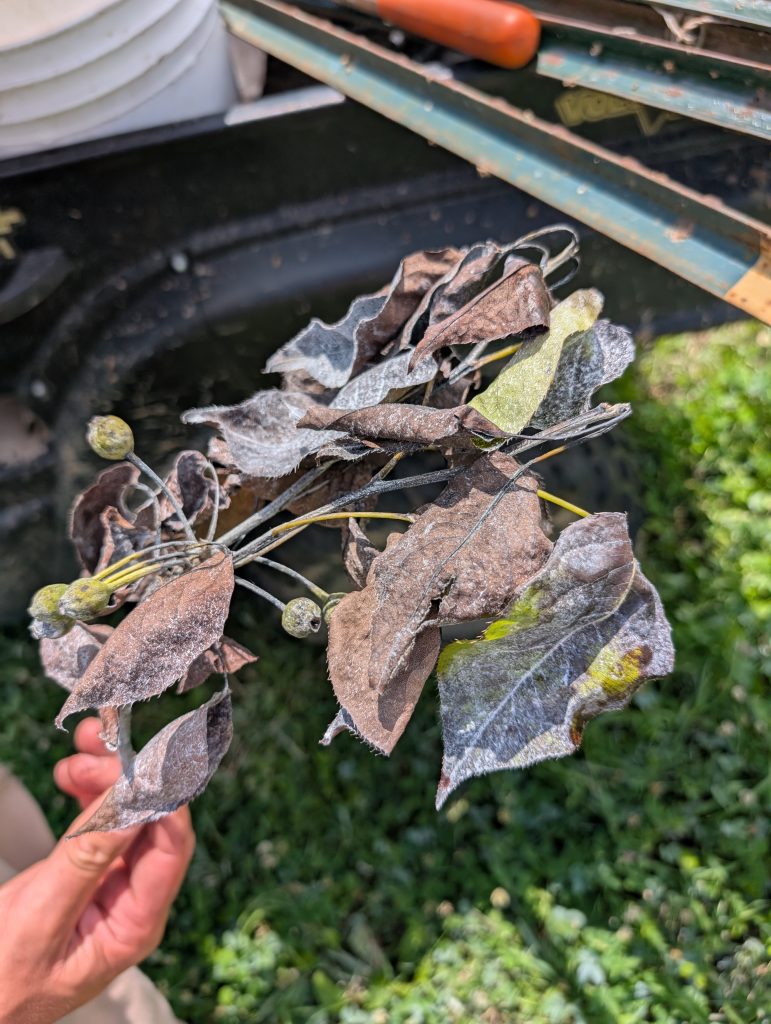
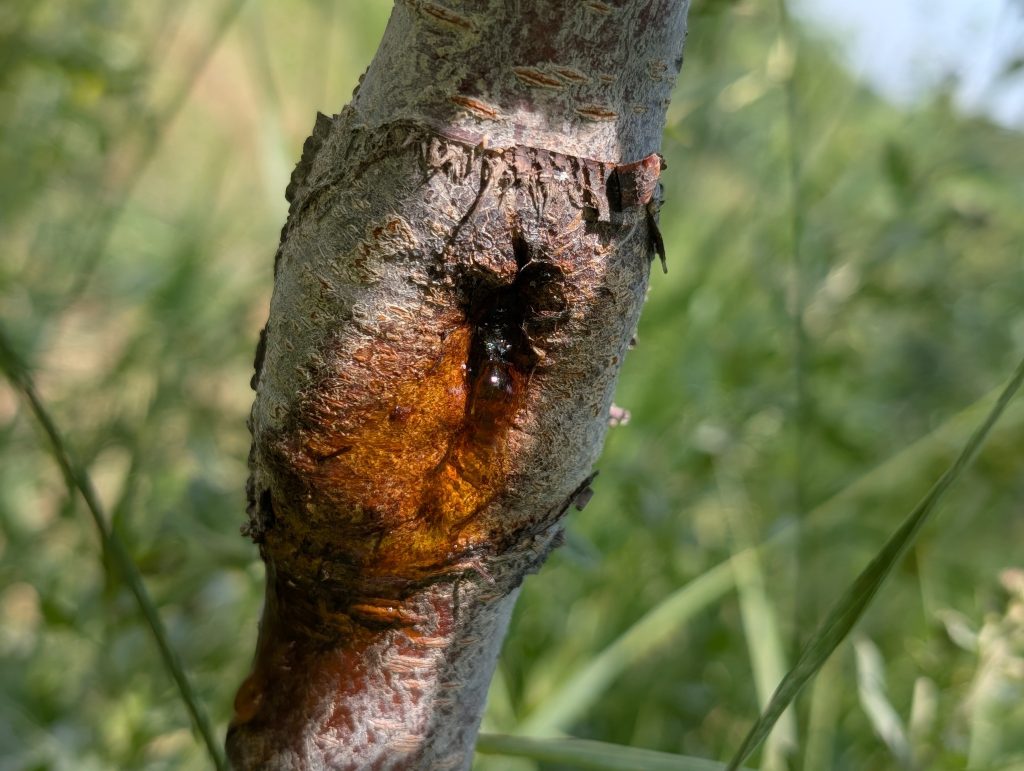
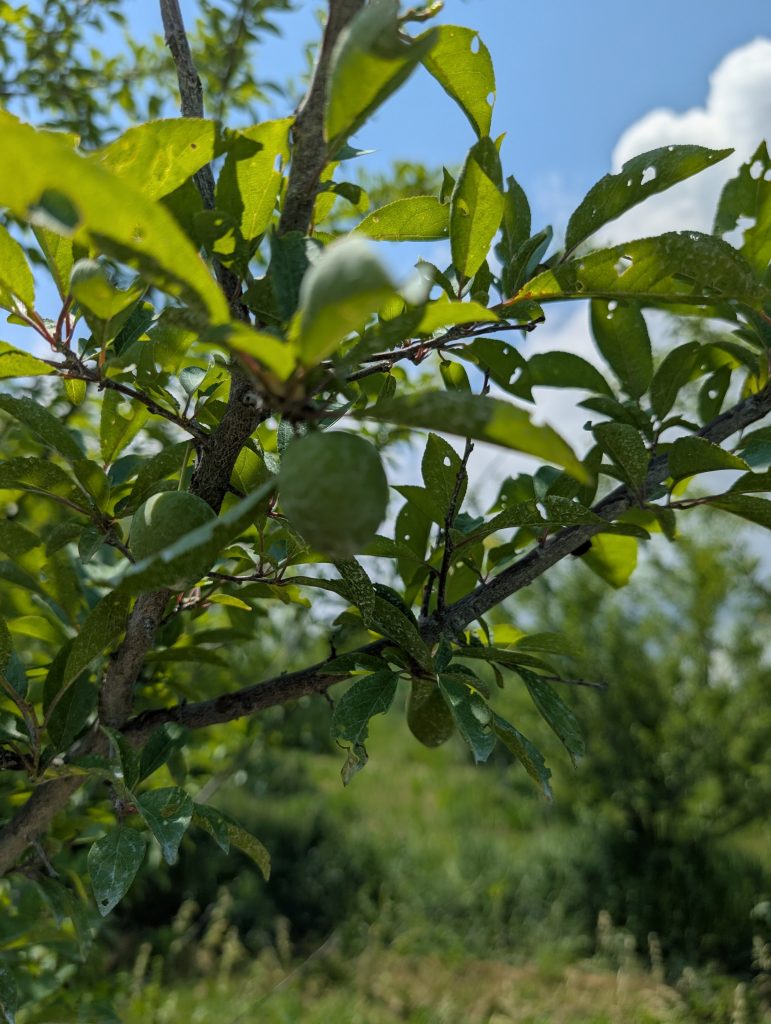
Ben plans to hang apple maggot monitoring traps that will help him better identify when emergence occurs, and document overall pest pressure – both important factors to keep in mind when implementing effective control measures. Apple maggot traps are typically red plastic spheres hung on a branch at about eye-level and are covered in a sticky material, like TAD. The apple maggot flies are attracted to the red color and fruit volatiles (scent), both occurring when fruit are ripe and/or damaged. Adult apple maggot females will lay a single egg directly under the skin of the fruit, and developing larvae will feed internally for 20-30 days prior to dropping to the orchard floor to pupate within the top 2” of the soil. Ben plans on using Grandevo (Chromobacterium subtsugae strain PRAA4-1T and spent fermentation media), a bio-insecticide, to target any building apple maggot populations.
Eastern tent caterpillar wreaked havoc on the Gooseberries shortly after my last visit, nearly completely defoliating the majority of the plants. Ben used an application of Dipel DF (Bacillus thuringiensis, subsp. kurstaki, strain ABTS-351) to help alleviate the infestation. New leaves are beginning to emerge and Ben hopes they will hang on until they are ready to pick in a few weeks.
Plum curculio movement has slowed to a halt, and Ben will continue using Cyd-X (Cydia pomonella granulovirus) for any further codling moth control. A reminder that second generation codling moth will typically occur at ~1250 degree-days (base 50F) from the initial biofix. Remember to refresh your lures and continue checking traps weekly to identify second generation emergence!
Note: Several factors determine the threshold for biofix, including size and elevation within the orchard, type of pheromone lure used, and if mating disruption is used.
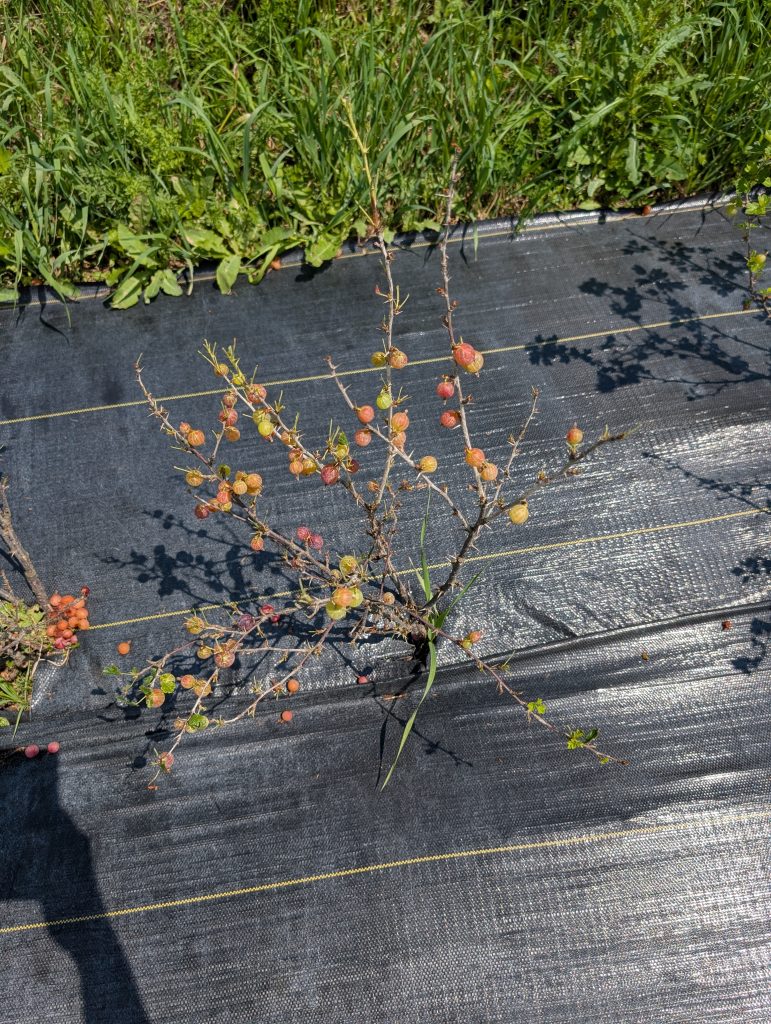
That’s all for this week’s Notes from the Field. Good luck and best wishes to all WI Fruit Growers over the next two weeks!
This article series is NOT intended to be prescriptive for other orchards. It is simply an opportunity for our readership to hear from other growers about their experiences growing fruit crops in Wisconsin.
Growing the same crop does not always justify the same practices. Management decisions at your farm should be tailored to your operation and consider location, regional climate, disease and pest history of your vineyard, and your varieties.
The mention of a product is NOT an endorsement. Always follow the instructions on product labels and consult weather stations (ex. NEWA) in your area for current weather forecast and disease and pest prediction models.
This article was posted in Notes from the Field and tagged Ben Kraus, Josie Dillon, Notes from the Field.
